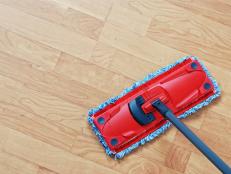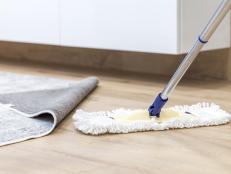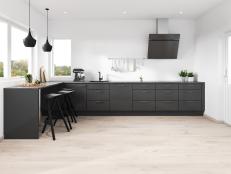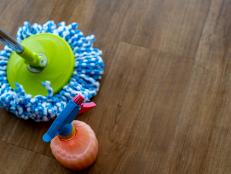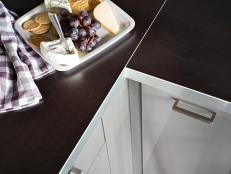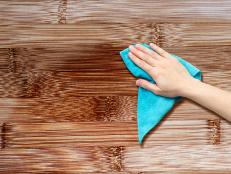How to Refinish Hardwood Floors
It takes some elbow grease to refinish hardwood floors, but it's worth it. Hardwood floors add value to your home and provide a classic look that goes with any style.

Whether renovating an old home or just looking for a way to spruce up your current abode, refinishing hardwood floors is a great way to make a space feel brand new. Assess the damage to your floors. If you only have some minor scratches and dings or a dull finish, you might be able to simply buff and add a new coat of varnish. But, even if your floors need a complete makeover, refinishing hardwood is a very manageable and rewarding do-it-yourself job that can save a lot of money.

Jennie Andrews
Refinishing hardwood floors will add charm to any room and is a great way to make a space feel new.
Typically, a professional will charge anywhere from $3 to $4 per square foot to refinish hardwood floors. For a 2,000-square-foot house, that can mean a bill as high as $8,000. It is possible to complete an entire 2,000-square-foot home in as little as four days for about $700. Ready to tackle the project? Follow these steps to refinish hardwood floors with a professional quality result.
Tools + Materials
- drum or belt floor sander (rent from a home improvement store)
- edger sander (rent a home improvement store)
- small pry bar
- needle-nosed pliers
- painter’s tape
- plastic sheeting
- wood filler - either a full trowel filler or wood patch
- spackle knife
- protective eye wear and respirator mask
- 40, 60, 80 and 120-grit sandpaper to fit each sander
- sanding pole
- 120-grit sanding screen
- shop vacuum
- tack cloth
- denatured alcohol
- oil-based stain (optional)
- stain applicator pads (optional)
- smooth foam roller
- polyurethane
- #2 fine steel wool pads
- rags
1. Prep the Room
Remove all furniture, window treatments and rugs. Cover vents and electrical boxes with painter's tape to prevent dust from getting into ducts (Image 1) and electrical work. If you are only refinishing one room, you might want to use plastic sheeting to seal doors. Use a pry bar to gently remove base molding (Image 2). You can remove the small piece of quarter-round and leave the rest of the baseboards in place.
- Pro Tip: Use a pencil to number the molding pieces as you remove them so you can replace them correctly.
Use needle-nosed pliers to remove any nails or staples. Nail down any boards that are loose.
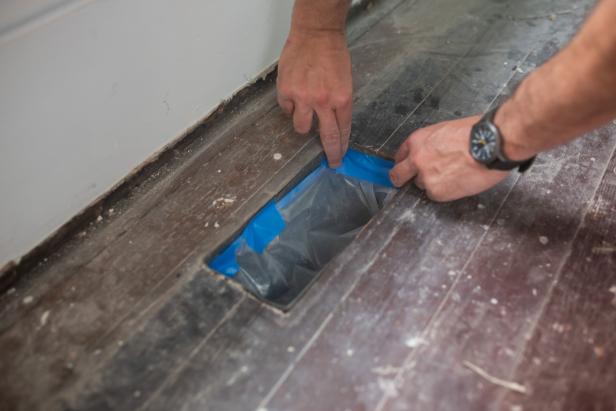
Jennie Andrews

Jennie Andrews
2. Patch and Repair
Check the floor for larger holes or cracks and repair using wood filler and a spackle knife. If your floors are heavily damaged, it is best to use a trowel filler, a thinner wood filler that spreads and covers large areas (Image 1). You will apply this with a large putty knife. But if your floors are less damaged, use a wood patch filler on individual spots (Image 2). Let the filler dry completely. Wipe down the floor with a damp rag to remove all debris and dust. Let it dry fully before sanding (Image 3).

Jennie Andrews
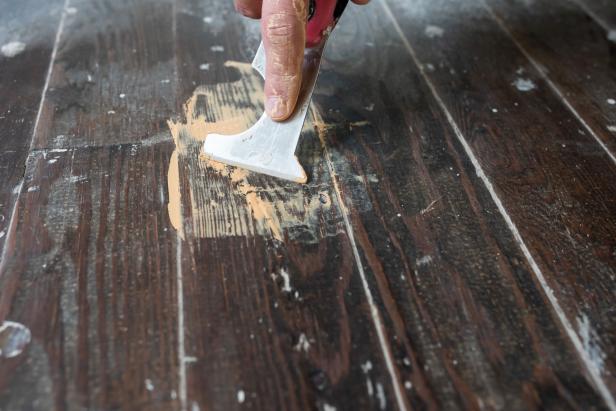
Jennie Andrews
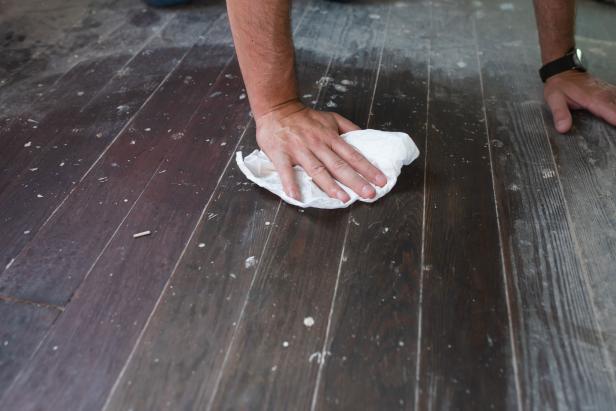
Jennie Andrews
3. Sand the Floor
For this step, you'll use a drum sander rented from a home improvement store. Working with a drum sander can be challenging — it can be hard to control and using it incorrectly can damage your floors. Ask for a quick tutorial and pointers when you rent the equipment. Then, practice sanding on a large sheet of plywood until you are comfortable. With the motor running, start moving slowly forward. Engage the sander as you are moving and disengage before you stop (Image 1). Wear a respiratory mask and eye protection.
Start sanding with the 40-grit sandpaper. This is a very coarse paper that will do the heavy-duty work of removing scratches, dings and the old finish, but will leave a rough surface. Moving with the grain of the wood, work in 3- to 4-foot sections. Keep moving across the floor at a slow, steady pace; stopping can create permanent marks in your floors. Overlap rows by one board. Each piece of sandpaper will be good for about 20 square feet. Check it regularly and change the sandpaper as soon as it looks worn. Additionally, empty the dust bag on the sander regularly. It will perform better if you keep it less than half full.
Because the drum sander is large and cumbersome, you will need to use a different sander for the edges of the room. Use the same grit sandpaper on the edge sander to sand right up to the wall (Image 2). Sand using the 40-grit sandpaper until the floor color is completely uniform.
Now repeat the process using 60, 80 and then the 120-grit paper on both the drum sander and the edge sander. Each round of sanding will reveal a smoother surface with all repaired holes or cracks flush with the floor surface (Image 3). Vacuum and wipe dust from the floor between each step. Using the fine-grit paper will result in that professional-quality finish you want.
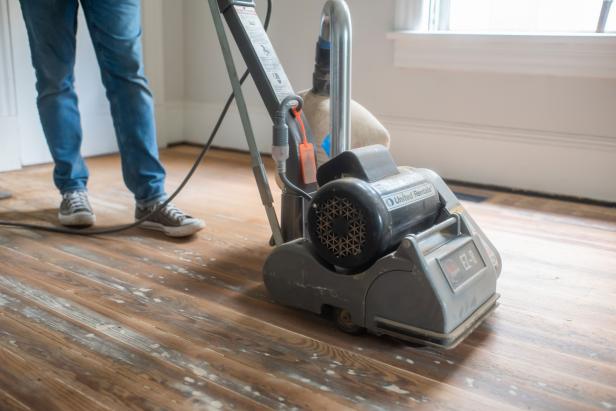
Jennie Andrews
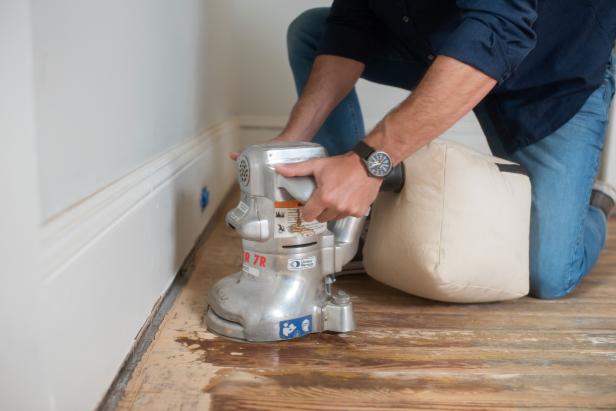
Jennie Andrews

Jennie Andrews
4. Buff the Floor
Buffing the floor will remove tiny sanding marks and give a completely smooth finish. Some people rent an industrial floor buffer for this step, but a pole sander, pictured, is another great option. Using a pole sander is a bit more time consuming, but also easier to use than a buffer and more affordable. Using a 120-grit sanding screen, buff the floor along each board, moving back and forth with the grain.

Jennie Andrews
5. Prep for Sealer or Stain
At this point, you'll want to be sure your floor and room are completely clean. Any sand, hair or small debris will affect your finish. Wipe down walls to prevent dust from falling to the floor as your finish is drying. Use a shop vacuum with a brush head to clean the floor thoroughly and then follow with a sticky tack cloth to remove any remaining particles (Image 1).
In order for the stain to penetrate the wood evenly, use a technique called "water popping." Mix a solution of one part denatured alcohol to two parts water. Spray the floor using a pump sprayer, covering the floor completely (Image 2). Run a rag or mop over the floor to evenly distribute the solution (Image 3). This causes the wood grains to rise and better accept the stain. Allow the floor to dry for at least 30 minutes.

Jennie Andrews
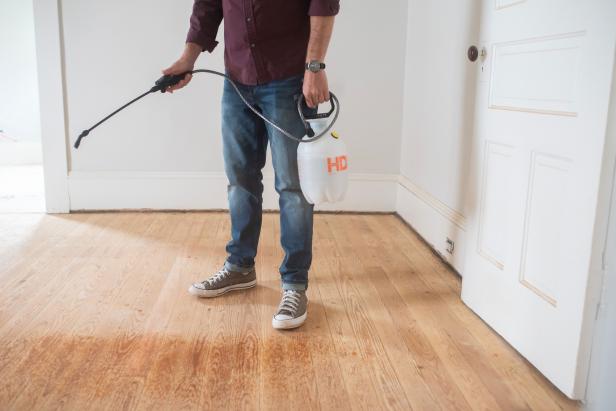
Jennie Andrews
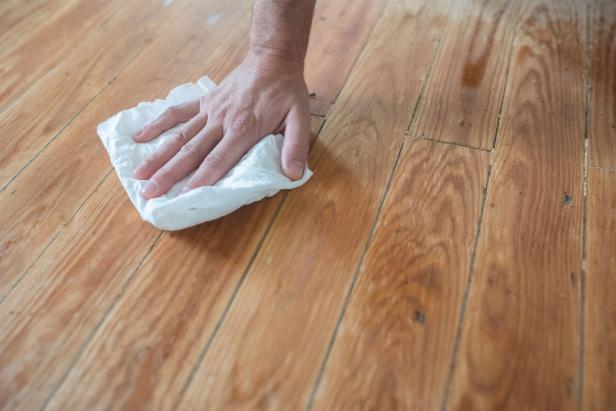
Jennie Andrews
6. Apply Stain (Optional)
The bare floor is now ready for either stain or sealer. If you want to change the color of the wood, add a stain. Pick an oil-based stain in the color of your choice.
Make sure your area is properly ventilated and wear a respirator mask. Stain and other finishing products emit harmful vapors. Use a lambswool applicator or staining sponge. Because you removed the molding in the first step, you won't have to worry about cutting in around the edges of the floor. Dip your sponge or rag in the stain and then wring out any excess liquid. Work from the far corner of your room toward the door so you don't step on the fresh stain. Apply stain in the same direction as the grain in 3- to 4-foot sections at a time. Don't allow stain to pool on the floor. Wipe away excess stain from the floor before moving to the next area. Try to avoid letting the edges dry. Pay extra attention to where each section meets the next and use your sponge to blend these lines together.
Once the entire floor is stained, let it dry completely (usually at least 24 hours). You may need to apply a second coat in the same manner to achieve the desired color.

Jennie Andrews
7. Seal the Floor
After the stain is dry or if you are skipping stain, finish by sealing the floor. Sealing protects the floor from water damage, dings and scratches and adds luster and shine to bring out the beauty of the wood.
Polyurethane sealer is probably the most popular hardwood sealer and is available as a water-based or oil-based product. Because polyurethane sits on top of the hardwood (it doesn’t soak in), it offers excellent protection from water and scratches and it requires minimal upkeep. It comes in a variety of finishes from glossy to matte. Make sure your space is well-ventilated and that you are wearing a respirator mask when using polyurethane, especially oil-based polyurethane.
Using the vacuum and tack cloth, make certain the floor is free of hair and dust. Then, apply the polyurethane with a smooth sponge roller (Image 1). You may need to use a paintbrush around the edges of the room. Work in small sections with the grain of the wood. Polyurethane requires multiple coats. Between each coat, let the product dry completely (refer to manufacturer’s instructions for drying times) and buff the floor between each coat. This can be accomplished with a machine buffer or done by hand with a #2 fine steel wool pad (Image 2). More coats typically equal more protection. Work from the far corner of the room toward the door, so you don’t "trap" yourself in the room. Allow the sealer to dry for a full 24 hours before walking on the floor and at least 72 hours before replacing rugs or furniture. Allowing for plenty of drying time will assure beautiful and durable floors.

Jennie Andrews
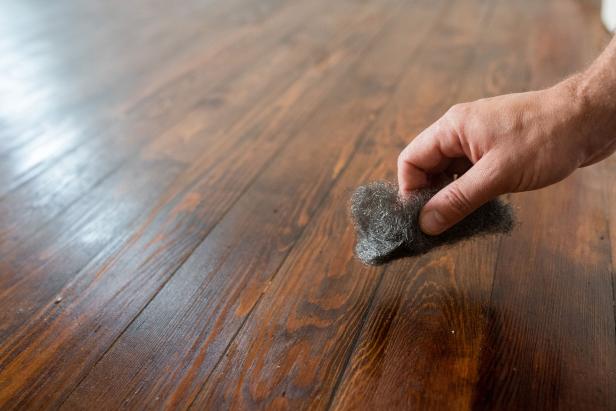
Jennie Andrews
There are finishing options in addition to polyurethane. Here are a few of the most popular.
- Natural Oil Finishes. Tung oil is one example of a natural oil finish. While this has the benefit of being an exceptionally eco-friendly finish, it doesn’t offer much in the way of protection. Additionally, oil finishes don’t add any sheen to the floor and they require the maximum amount of upkeep and need to be reapplied regularly.
- Wax. Wax has recently made a resurgence as a trendy floor finish. It is a popular option for historic homes and for a matte, natural finish. Wax loses points, though, for its lack of durability. Applying wax is also labor-intensive as it must be buffed into the wood.
Now that you have a home full of beautiful floors, keep them looking new by sweeping and mopping regularly, using furniture pads, and exercising caution with hard-soled shoes. Experts say you can refinish traditional hardwood floors up to 10 times, so with a bit of care, your floors should last (and remain beautiful) for a lifetime.
Tips for Matching Wood Floors 10 Photos
Avoid a mismatched look with the successful blending of new wood floors with preexisting sections.







